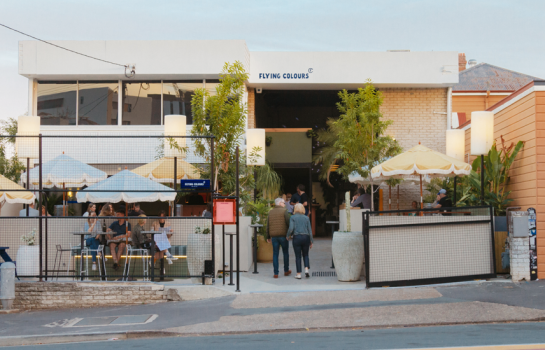

Make your own creamy labna with Greek Yoghurt from your local market
Labna, or labneh, is a Middle Eastern staple made by removing excess whey from salted yoghurt, resulting in a cream cheese-like spread that is slightly salty. Top it with your favourite olive oil and dukkah and eat with crusty bread, pear slices or crackers.
INGREDIENTS
Labna
1/2 teaspoon fine sea salt
500 ml Lebanese or Greek-style yoghurt
olive oil, to drizzle
Dukkah
1/3 cup roasted unsalted cashews
1/3 cup sesame seeds
2 tablespoons coriander seeds
2 tablespoons cumin seeds
12 white peppercorns
1/2 teaspoon sea salt flakes
TO MAKE
Labna
Line a colander with two layers of moistened muslin cloth. Place the colander on top of a large bowl, so the labna is above any liquid whey that will drain out.
Mix the salt to the yoghurt and spoon onto the muslin cloth. Refrigerate for about 24–48 hours, allowing the whey to drain off naturally. The consistency of the yoghurt will become thicker and creamier. For thicker consistency, drain for longer.
Transfer the labna to a dish or cheese board. Drizzle with your favourite olive oil and sprinkle with fresh dukkah.
Dukkah
Place cashews in a food processor and process until mostly about the size of sesame seeds. Heat a large non-stick frypan over medium to high heat and dry roast the cashews until golden. Place in a bowl.
In the frypan, dry roast the sesame seeds until golden, then remove to a bowl. Place the coriander seeds, cumin seeds and peppercorns into the pan and toast until starting to colour, and become aromatic. Place into the food processor with the sea salt and process to a coarse powder. Place in the bowl with the cashews and sesame seeds. Mix well and allow to cool before storing in an air-tight container.
WHEY
If you are struggling with what to do with the leftover whey, then here are just a couple of ideas. Substitute the whey in any baking recipe that lists water (or even milk), for example fresh breads and rolls, cornbread, pancakes, waffles, muffins, biscuits or tortillas. You can also use the whey to lacto-ferment vegetables, condiments, sauerkraut, chutneys and jams; add the whey to soups and stews; or use it to soak grains. Finally, try your hand at making your own probiotic (or whey) lemonade.
The Stumble Guide is our comprehensive Brisbane dining guide with more than 2400 places to eat, drink, shop and play.




